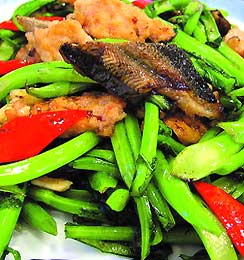
The coastal province of Zhejiang has long been known as "the land of fish and rices". Naturally, therefore, it has always been a great place for eating. Especially after 1127 when Hangzhou became the capital of the Song Dynasty, moved from Kaifeng in the north. Some of the best chefs from both these cities were brought together, and as a result northern methods of cooking were introduced to the south. Thus, Zhejiang cuisine evolved, which became one of the most famous types of cooking.
Zhejiang cuisine consists mainly of four local styles: Hangzhou, Ningbo, Shaoxing and Wenzhou, each having its own special characteristics. Among the four, Hangzhou cuisine is considered the most representative one in Zhejiang. Although the main methods of cooking are frying and stewing, the food produced is usually light and delicate. Some of the most popular dishes are Shrimp with Longjing Leaves, West Lake Fish in Sweet and Sour Sauce, Fried Eel Slices, West Lake Water Shield Soup, Beggar's Chicken, Dongpo Pork and Steamed Pork in Lotus Leaves.
Ningbo dishes tend to favour more steaming, roasting and stewing, and are slightly richer in taste. Yellow croaker, eel and crab are popular in Ningbo, and there is also a sweet soup made of turtle stewed with rock sugar. Shaoxing dishes are usually light on oil and spices; yet lack nothing in richness, as Shaoxing rice wine is often used to make the sauces for dishes. The last of the fourth, Wenzhou dishes, are also light on oil, and some of the more popular ingredients are yellow croaker, crab and squid.
Zhejiang cuisine strives to be delicate in taste as well as in appearance. In recent years people have been trying to revive Southern Song dynasty imperial cooking, based on what they can find in historical records. Their emphasis is on preserving and bringing out the original taste of the recipes, thus visitors to Zhejiang now have even more varieties of cuisine to tempt their palates.